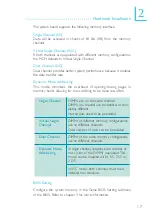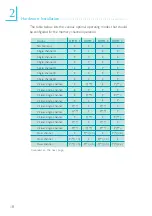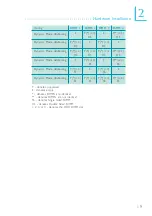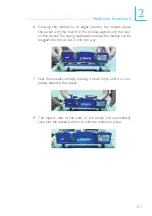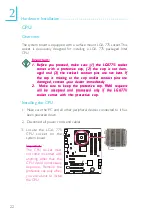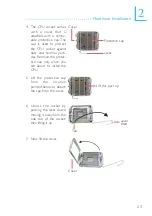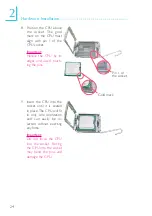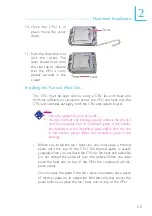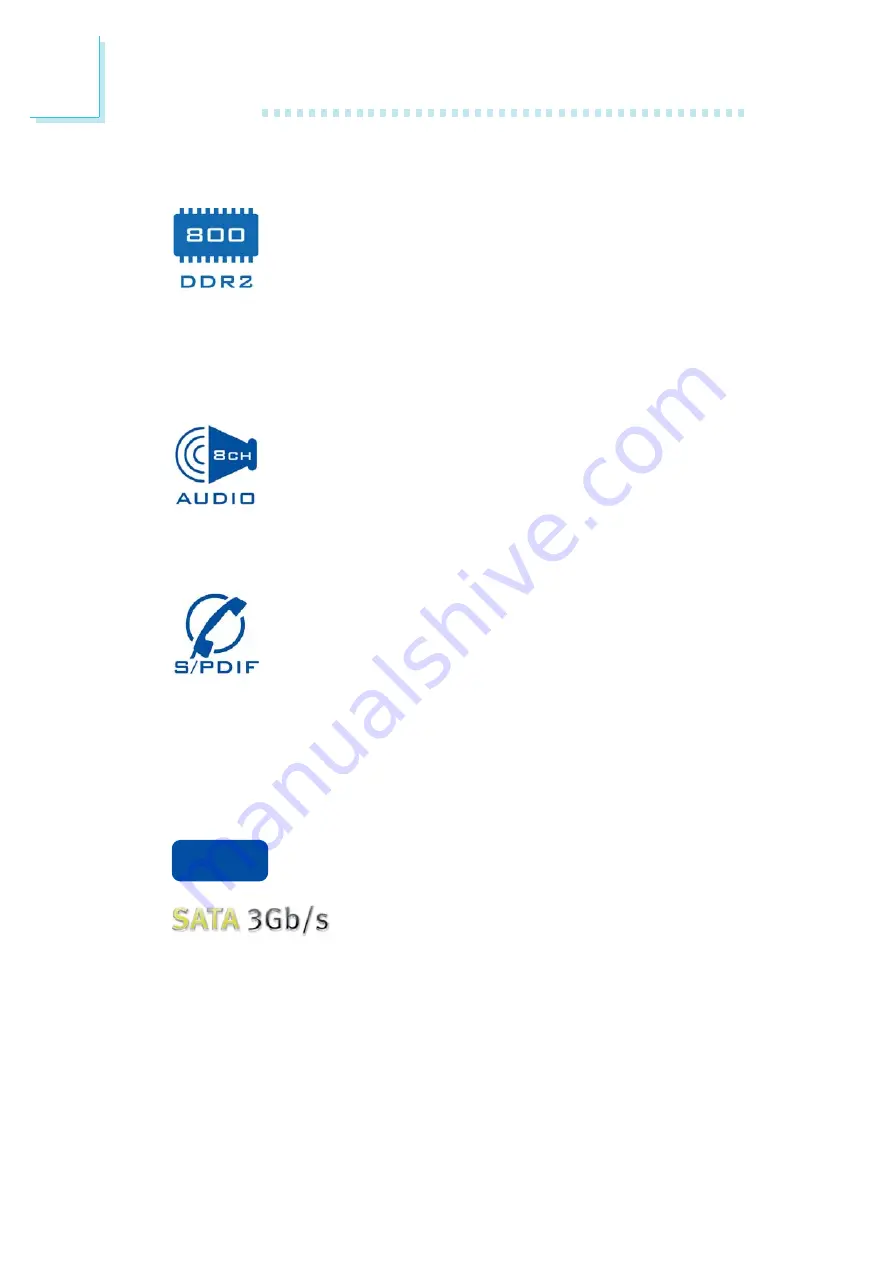
Introduction
1
10
Features
DDR2 is a higher performance DDR technology whose
data transfer rate delivers bandwidth of 4.3 GB per sec-
ond and beyond. That is twice the speed of the conven-
tional DDR without increasing its power consumption.
DDR2 SDRAM modules work at 1.8V supply compared to 2.6V
memory voltage for DDR modules. DDR2 also incorporates new
innovations such as the On-Die Termination (ODT) as well as larger
4-bit pre-fetch against DDR which fetches 2 bits per clock cycle.
The onboard Realtek ALC885 is a High Definition audio
codec and the 6 audio jacks at the rear I/O panel pro-
vides 8-channel audio output for advanced 7.1-channel
super surround sound audio system. ALC885 also sup-
ports S/PDIF output, allowing digital connections with DVD systems
or other audio/video multimedia.
S/PDIF is a standard audio file transfer format that
transfers digital audio signals to a device without having
to be converted first to an analog format. This prevents
the quality of the audio signal from degrading whenever
it is converted to analog. S/PDIF is usually found on digital audio
equipment such as a DAT machine or audio processing device. The
S/PDIF interface on the system board sends surround sound and
3D audio signal outputs to amplifiers and speakers and to digital
recording devices like CD recorders.
The JMicron JMB368 chip suppor ts up to two
UltraDMA 100Mbps IDE devices.
Serial ATA is a storage interface that is compli-
ant with SATA 1.0 specification. The Intel
chipset supports Serial ATA ports with speed of up to 3Gb/s. Serial
ATA improves hard drive performance faster than the standard par-
allel ATA whose data transfer rate is 100MB/s.
ide
ide
ide
ide
ide

















